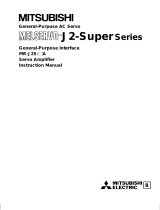Page is loading ...

Torque
Adjustment
C Bore F Bore
13200 Sixth Avenue North, Plymouth, MN 55441-5509
Phone 763.546.4300 Fax 763.546.8260 TOLL FREE 1.800.533.1731 www.zero-max.com Rev 1.01
Type C, CD Shaft-to-Shaft Coupling
H-TLC Installation Guide
H-TLC
Models 500 & 1000
Note: Either end can be the driver or
driven end for C and CD models.
Minimum
Engagement
Maximum
Engagement
Minimum
Engagement
Maximum
Engagement
500 1.500" 1.625" .750" .855"
1000 1.875" 2.230" 1.125" 1.210"
H-TLC
Model
Shaft (C) Bore Housing (F) Bore
Table 1
Sleeve Bushing Sprocket Not Included
Type B, BD Through-Shaft Mount
Note: Either end can be the driver or
driven end for B and BD models.
1. Align the shafts and shim components as needed to bring into
alignment. Shafts should be aligned to within 0.010" parallel,
1.0° angular, and axial shaft separation to match the shaft
engagements shown in Table 1.
2. Examine shaft and clean as necessary. Shaft surface should
be clean and free of corrosion.
3. Mark the aligned location and remove either the driver or the
driven component to allow the H-TLC to be slid onto the shaft,
with a shaft key in place.
4. Reinstall the driver or driven component that was removed
to the aligned location, installing the shaft into the bore of the
H-TLC, with a shaft key in place.
5. Make sure shafts protrude into the bore at least the minimum
distance, but no more than the maximum distance shown in
Table 1.
6. Confirm alignment of the connected shafts by rotating and
moving the H-TLC axially. If the H-TLC does not move freely,
the shaft alignment needs to be redone (repeat step 1).
7. Tighten setscrews to secure the H-TLC to the shafts. Be sure
to tighten all (6) setscrews—there are (4) in the Shaft end,
and (2) in the Housing end of the H-TLC.
NOTE: Setscrews should not be tightened over 40 in-lbs,
maximum. Use non-permanent thread locking compound,
if needed.
8. Adjust torque setting as needed by adjusting the torque
adjustment bolts on the end of the H-TLC.
See Torque Adjustment Instructions For More Detail.
1. Check that the free length of the shaft is greater than the
length of the H-TLC.
2. Examine shaft and clean as necessary. Shaft surface should
be clean and free of corrosion.
3. Install the H-TLC onto the shaft with a shaft key in place.
When possible, add a thin film of grease in the bore of the
sleeve bushing (see diagram to right).
4. Shaft should protrude through the full length of the H-TLC.
5. Tighten setscrews to secure the H-TLC to the shaft. Be sure
to tighten all (4) setscrews in the Shaft end of the H-TLC.
There are no setscrews in the Housing end.
NOTE: Setscrews should not be tightened over 40 in-lbs,
maximum. Use non-permanent thread locking compound,
if needed.
6. Install customer-supplied sprocket, pulley, or other component
to the bolt pattern on the face of the H-TLC using customer-
supplied screws.
7. Adjust torque setting as needed by adjusting the torque
adjustment bolts on the end of the H-TLC.
See Torque Adjustment Instructions For More Detail.
Torque Adjustment
/












